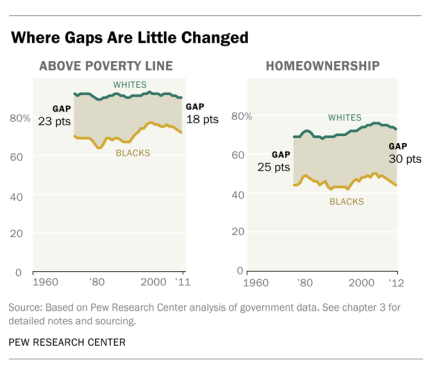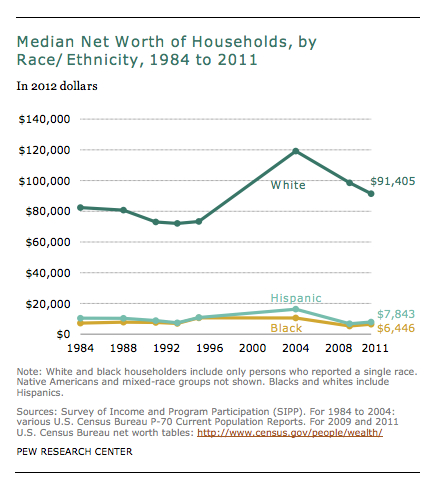6 Charts Show Wide Economic Gulf Between Races
The Pew Research Center breaks out data on race and economics.
Aug. 22, 2013— -- Fifty years after Martin Luther King, Jr. gave his “I Have a Dream” speech, the economic gulf between whites and blacks in America is not only still in place -- it’s getting worse.
A data set and poll compiled by the Pew Hispanic Center shows that in the lives of many people, racial inequality is just as present and problematic today as it was on August 28, 1963, when King gave the forward-looking speech at a civil rights march in Washington, D.C.
Only 45 percent believe that the country has made substantial progress toward equality among people of different races. Blacks were most likely to think that only a little or no progress has been made. While 27 percent of blacks believe that, 23 percent of Hispanics and 11 percent of whites think the same thing.
Pew put together some charts that show how in many economic areas, the gap between whites and blacks has only widened.

In other areas, we haven’t really seen any progress.

There are some places where the divide between races has narrowed, though.

Some key economic indicators show that there’s a huge distance between whites and non-whites in areas like income and net worth.



The King speech came at a march for “jobs and freedom.” The focus on jobs was an acknowledgement that racial equality is tied to economic equality, and that combating racism also meant combating the earning gap between whites and other groups.
King spoke about that in one of his last sermons:
"If a man doesn't have a job or an income, he has neither life nor liberty nor the possibility for the pursuit of happiness,” he said. “He merely exists.”
The latest data from Pew tells us that the Dream is a long way off. And in some areas, we’ve actually been moving in the opposite direction.